40 hazard labels for dangerous goods
Dangerous Goods Safety Marks - Transport Canada Dangerous goods safety marks must be: Visible*; Legible; Displayed against a background of contrasting colour; Made of durable, weather-resistant material that will resist detachment or deterioration in the conditions they will be exposed to; and Displayed in the appropriate colour (safety marks must not be faded). Dangerous Goods Labeling & Marking Guide | Klinge Corp Dangerous goods transport labels communicate the primary hazards posed by the dangerous goods. People handling dangerous materials can immediately identify any hazardous materials in the package through colors, codes and pictograms such as hazard symbols or handling labels. Transport labels for dangerous goods must be clearly printed on or affixed to the surface of the package in a location other than the bottom and near the shipping marking, as they inform how to transport, handle and store ...
Hazard class labels - ADR and IMO - LeghornGroup We have a wide range of hazard warning diamonds (Haz-Chem Labels) which are typically available in 48 hours from the order. These ADR and IMO adhesive hazard class labels include all classes of hazard and flammability, Environmentally Hazardous labels and those related to the danger to marine pollution according to IMDG regulations.
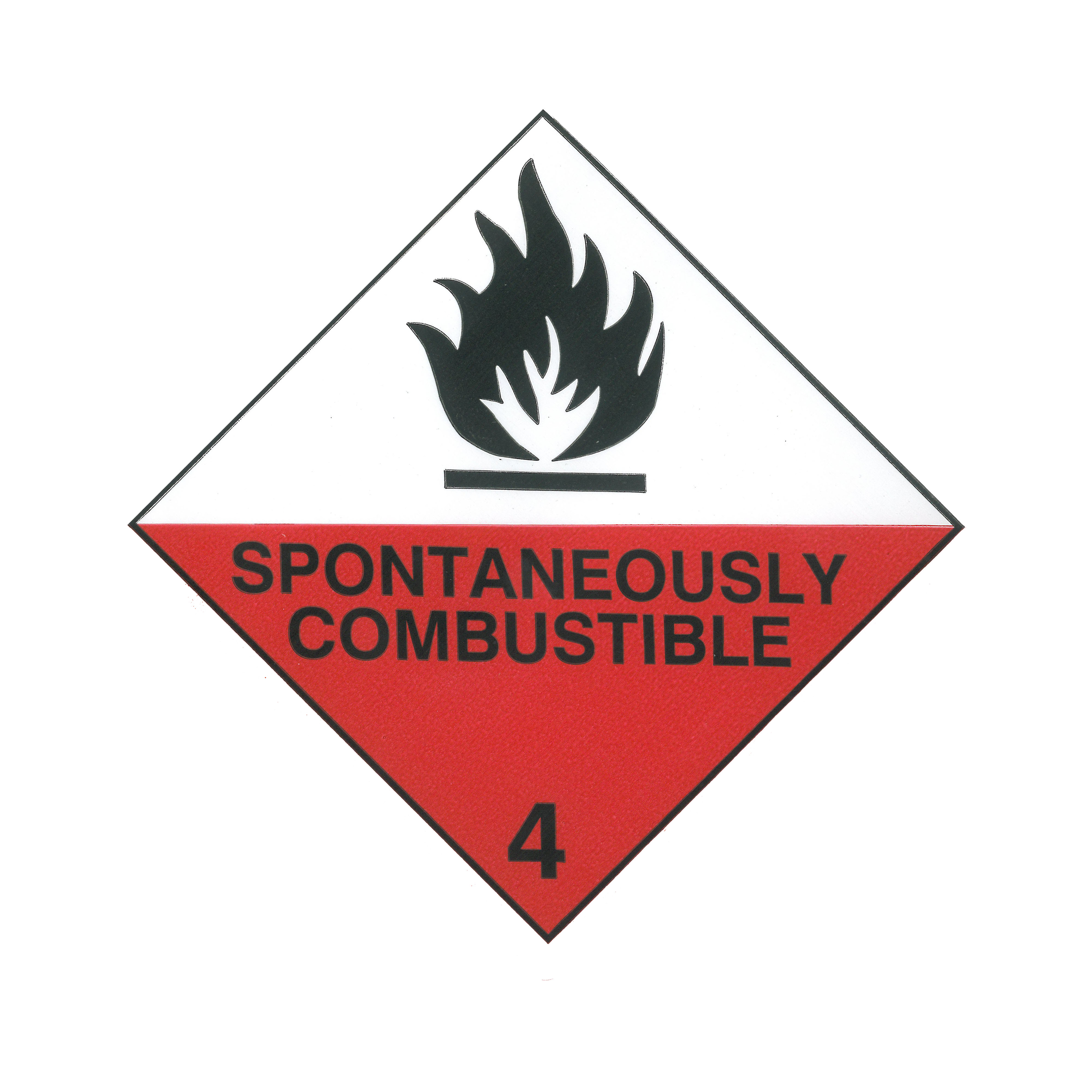
Hazard labels for dangerous goods
Dangerous Goods Labels/Packaging Labels Archives - Labeline.com You need to ensure your dangerous goods packaging, inner packaging, DG labelling and documents comply with international regulations and standards. Leading Regulatory Provider At Labeline all our labels comply with the strictest DGR regulation standards for IATADGR, ICAOTI, IMDG & ADR so you can be assured that our labels comply with all modes of dangerous goods movements. A Guide to Hazard Labels | Air Sea Containers Types of dangerous goods labels The hazard classes range from Class 1 to Class 9. Class 1 - Explosives Class 2 - Gases Class 3 - Flammable Liquids Class 4 - Flammable Solids Class 5 - Oxidizing Substances Class 6 - Toxic & Infectious Substances Class 7 - Radioactive Materials Class 8 - Corrosives Class 9 - Miscellaneous Dangerous Goods adrdangerousgoods.com › eng › articlesClasses 1-9 of dangerous goods explained Jun 22, 2017 · The classes are part of the United Nations-based system of identifying dangerous goods, and are used within many different subsystems such as the ADR, RID, IMDG and DGR for classifying dangerous goods and hazardous materials. Class 1 Explosive substances and articles. Class 1 contains substances and articles which pose a hazard due to explosion.
Hazard labels for dangerous goods. Labels - Hazardous Substances Products with this symbol on the label or safety data sheet can cause chronic health issues if people are exposed to the product. These products can: cause cancer. affect fertility. cause damage to an unborn child. cause allergies, asthma or breathing difficulties when inhaled. They can also be respiratory sensitisers. Dangerous Goods Labels Class 4 - Labelident dangerous goods labels, class 4.1, flammable substances, 4, polyethylene foil, red/white stripes-black, 100 x 100 mm, 1000 labels material: polyethylene foil label adhesive: permanent core diameter: 3 inch (76.2 mm) piece (s): 1000 labels on 1 roll (s) €24.99 As low as €10.99 Shipping costs information In stock - Delivery time 1-2 days Add to Cart › hazmat-labels › hazard-class-9Hazard Class 9 - Hazmat Labels from Labelmaster Choose Labelmaster's Hazard Class 9 Labels. Available in International Wordless, Personalized with a Shipping Name, Pre-Printed or with Blank tabs, these labels are ideal when transporting Dangerous Goods such as dry ice, ammonium nitrate fertilizers, lithium ion batteries, vehicles and first aid kits. Dangerous Goods Labels | Labels Online The EU has passed numerous directives and regulations to help keep people safe when using and transporting potentially hazardous substances. ADR regulations require all packages containing dangerous goods to have a warning label and that the label shall be in the form of a square at an angle of 45° (diamond shaped). All our Dangerous Goods Labels fully comply with IATA/ ICAO, UN ADR/RID and IMDG/IMO requirements and the base material conforms with BS 5609:1986.
IATA - DGR Hazard Labels DGR Hazard Labels IATA offers a wide variety of fully compliant hazard labels for all classes: Class 1 Explosives Class 2 Gases Class 3 Flammable Liquids Class 4 Flammable Solids Class 5 Oxidizing Substances Class 6 Toxic and Infectious Substances Class 7 Radioactive Material Class 8 Corrosives Class 9 Miscellaneous Dangerous Goods Labels for hazardous substances and dangerous goods - HERMA Chemical labels must stick firmly to containers of all kinds: barrels, drums, canisters, shipping containers, IBCs, FIBCs, bottles and pallets. The surfaces, which can be metal, plastic, glass or wood, have many different requirements. Labels (GHS) | UNECE For hazard communication elements (labels and marks) applicable to other transport classes or transport conditions covered by transport of dangerous goods regulations but not addressed in the GHS (e.g. labels for classes 7 and 9; elevated temperature substance mark; lithium battery mark; etc) refer to Part 5 of the United Nations ... Shipping Dangerous Goods - Ground Transport Guide - Labelmaster As hazmat shipping regulations change overtime, it's important to stay informed on regulatory updates, hazmat packaging, required documentation, labels and markings and training available to you as a hazmat shipper.Below, find a guide to the essential factors to keep in mind for safe and successful ground transport of dangerous goods. Monitor for Regulation Updates
Marking and Labelling of Dangerous Goods - ChemSafetyPro.COM Dangerous goods packages must be marked and labelled before they are assigned for shipment. The differences between marking and labelling under TDG are listed as below: Marking: mainly refers to UN number, proper shipping names, UN specification marks and other markings if applicable (i.e. orientation arrows, environmental hazardous substances ... Dangerous goods classes and hazard labels - Civil Aviation Safety Authority Below are the 9 hazard labels for the 9 classes of dangerous goods. Class 1 Explosives Class 1 explosives This includes items such as: explosive substances pyrotechnic devices ammunition fireworks detonators. Class 2 Gases Class 2 gases These can be transported as compressed, liquefied, refrigerated liquefied or gas in solution. Hazard Labels for Dangerous Goods | Air Sea Containers Hazard Label Size. Dependent on the size of the package, appropriate hazard labels and markings must be used - the most common is 100mm x 100mm. Information about label sizes can be found within relevant dangerous goods regulations for the method of transport chosen (IATA, ADR IMDG.) Marking and labelling of dangerous goods. Any irrelevant markings or hazard labels that are placed on a package must be removed or obliterated to avoid cause confusion and ensure that the correct hazard class ... Shipping dangerous goods: Overview - GOV.UK Overview If you want to transport dangerous goods, there are rules on how to pack and label them and the training your staff must have. You may also need to have a dangerous goods safety adviser (...
› un3363-dangerousUN3363 Dangerous Goods in Machinery - ICC Compliance Center Aug 22, 2020 · The dangerous goods within the machinery or apparatus must have a listed “limited quantity” (LQ) amount and cannot exceed this quantity within the device. Particular regulations (e.g., IATA DGR PI 962, 49 CFR 173.222) may restrict the quantity per package or per item to an amount less than the LQ.
HAZARD & HANDLING LABELS | Airsafe Select Resource below to Either View or Download. AIRSAFE's Collection of Hazard & Handling labels. Click to view, download or print to size and use as required.
How to label dangerous goods | Shipping Channel United Kingdom - FedEx Ensure all the dangerous goods labels and markings (printed information on the box) are on one side of the package. The labels must lie flat and not wrap around the edges of the package. If the labels and markings don't fit on one side, get a bigger box - according to IATA regulations all information related to the dangerous goods, including address details, must be on one side of the box.
en.wikipedia.org › wiki › GHS_hazard_pictogramsGHS hazard pictograms - Wikipedia Hazard pictograms form part of the international Globally Harmonized System of Classification and Labelling of Chemicals (GHS). Two sets of pictograms are included within the GHS: one for the labelling of containers and for workplace hazard warnings, and a second for use during the transport of dangerous goods.
Marking & Labeling Your Shipment - Federal Aviation Administration Marking means a descriptive name, identification number, instructions, cautions, weight, specification, or UN marks, or combinations thereof, required on outer packagings of hazardous materials or dangerous goods. The marking required: Must be durable, in English, and printed on or affixed to the surface of a package or on a label, tag, or sign.
Dangerous Goods Labels - JALCARGO Dangerous Goods Labels Please right click and download the necessary label from "PDF data for printing" on the table below. In order to view PDF documents, you will need to install Adobe Reader on your computer. about PDF
Comparison of GHS Labels and Dangerous Goods Labels - ChemSafetyPro.COM Under TDG regulations, there are also requirements on the minimum dimension of hazard labels. (i.e, 100mm x100mm for >25kg packages). This size is usually much bigger than the size of a GHS pictogram. Where to Place GHS Labels and Dangerous Goods Labels Dangerous labels are usually placed on the outer packagings.
Hazard labels for the transportation of dangerous goods for download Hazard labels for the transportation of dangerous goods for download This page is no longer updated since 2022. To download the transport labels shown below in the PGN format with good resolution (3000 pixels large/high) right-click on the wanted pictogram and choose "Safe Link As ..." (or "Save Target As...").
en.wikipedia.org › wiki › Dangerous_goodsDangerous goods - Wikipedia Dangerous goods are assigned to UN numbers and proper shipping names according to their hazard classification and their composition. Dangerous goods commonly carried are listed in the Dangerous Goods list. Examples for UN numbers and proper shipping names are: 1202 GAS OIL or DIESEL FUEL or HEATING OIL, LIGHT; 1203 MOTOR SPIRIT or GASOLINE or ...

Hazard Labels, Hazardous Waste, 6X6, Adhesive Paper, 500/Rl: Industrial Warning Signs: Amazon ...
Environmentally Hazardous Substance Labels / Marks - Hibiscus Plc Environmentally Hazardous Substance Package Labels/Marks. All modal regulations state that the EHS package labels must be in the form of a square set at an angle of 45° (diamond shaped). The symbol (dead tree and fish) must be in black on white, or suitable contrasting background. The minimum label dimensions must be 100mmx100mm and the border ...
Class 8 Dangerous Goods Labels | Labels Online The Class 8 label is used for marking and identifying corrosive substances and articles during transportation. Corrosive substances are substances that cause severe damage by chemical action when in contact with living tissue or other materials. ADR regulations require all packages containing dangerous goods to have a warning label and that the label shall be in the form of a square at an ...
Dangerous Goods Labels / GHS Labels - Labelident Dangerous goods labels are diamond shaped and contain intuitive pictograms and specific number codes (classes) which give information about the type of danger a substance proposes during transportation. For every HAZMAT class, you will find the suitable label in our Labelident shop. In addition, we carry GHS-Labels, LQ-Labels as well as UN ...
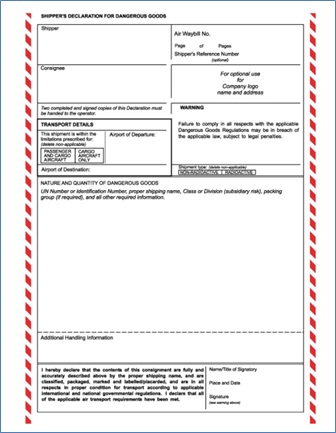
Declaration of Dangerous Goods Definition | Operations & Supply Chain Dictionary | MBA Skool ...
› resources › labelfinderLabelmaster's Hazard Class Label Finder - Hazmat Shipping ... Labelmaster's DOT hazard class labels meet the design requirements of 49 CFR DOT regulations, ICAO and other international air regulations, and IMDG regulations.Hazard class labels measure 100mm x 100mm and are printed with light-fast inks for high durability.
Information on hazardous chemical labels | Safe Work Australia A hazardous chemical is correctly labelled if it is packed in a container and has a label written in English. Pictograms and text on the label should be clear. The label must also be firmly fixed to the hazardous chemical's container. It should not be hidden or in a spot where it could be removed, such as on the lid. The label must include the:
- ONLY approved distributor in the UK for IATA Dangerous goods consignments are often snagged en route because they are incorrectly marked with non-compliant labels or there are errors with documentation. Labeline helps its customers reduce the risk of costly delays, or even fines, by maintaining high stock levels of compliant labels, marks and DG forms for immediate despatch.
IATA Dangerous Goods Training | Hazmat University IATA Dangerous Goods Training: Shape and Visibility. Hazard labels must be affixed in a diamond shape (at an angle of 45 degrees) for easy identification. All the dangerous goods markings and labels must be visible and legible. They must not be obscured by any text, stickers, document pouch, tape, or other material.
adrdangerousgoods.com › eng › articlesClasses 1-9 of dangerous goods explained Jun 22, 2017 · The classes are part of the United Nations-based system of identifying dangerous goods, and are used within many different subsystems such as the ADR, RID, IMDG and DGR for classifying dangerous goods and hazardous materials. Class 1 Explosive substances and articles. Class 1 contains substances and articles which pose a hazard due to explosion.


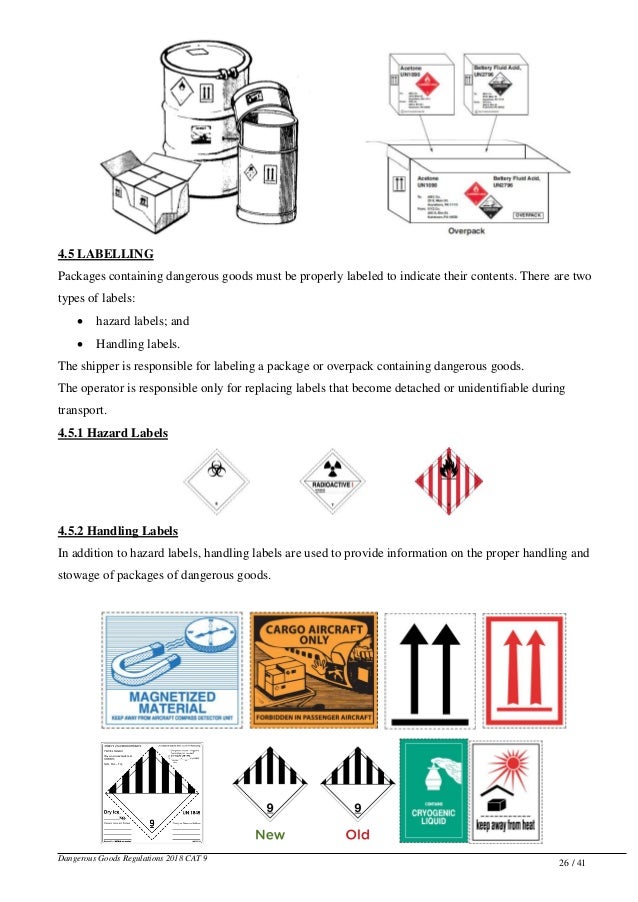
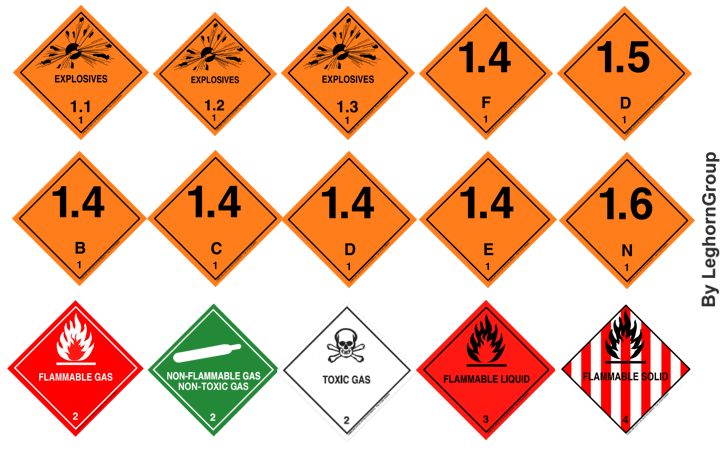



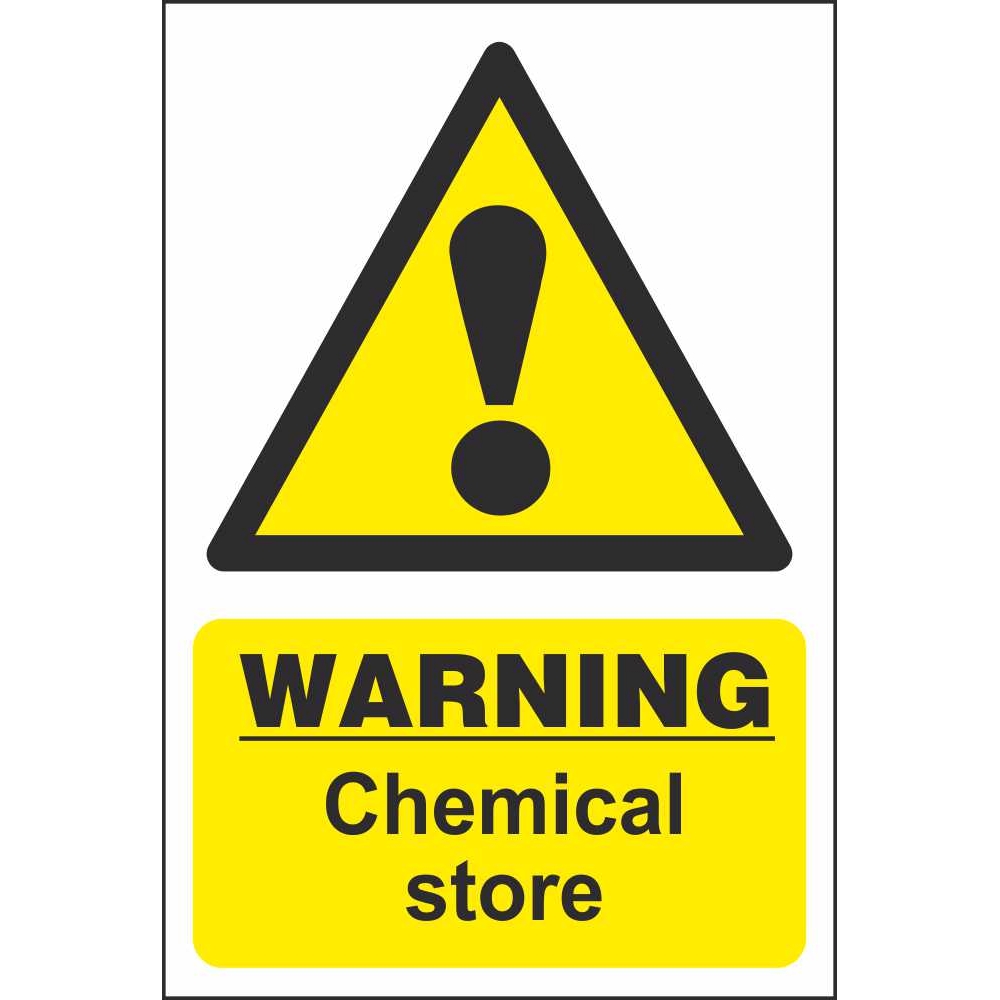


Post a Comment for "40 hazard labels for dangerous goods"